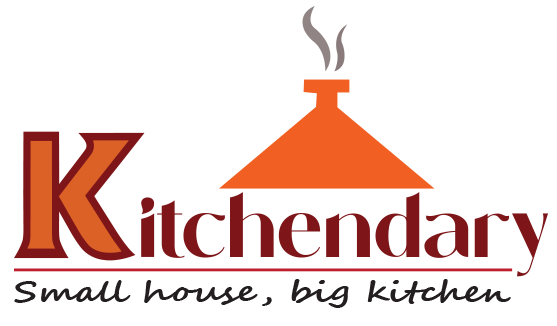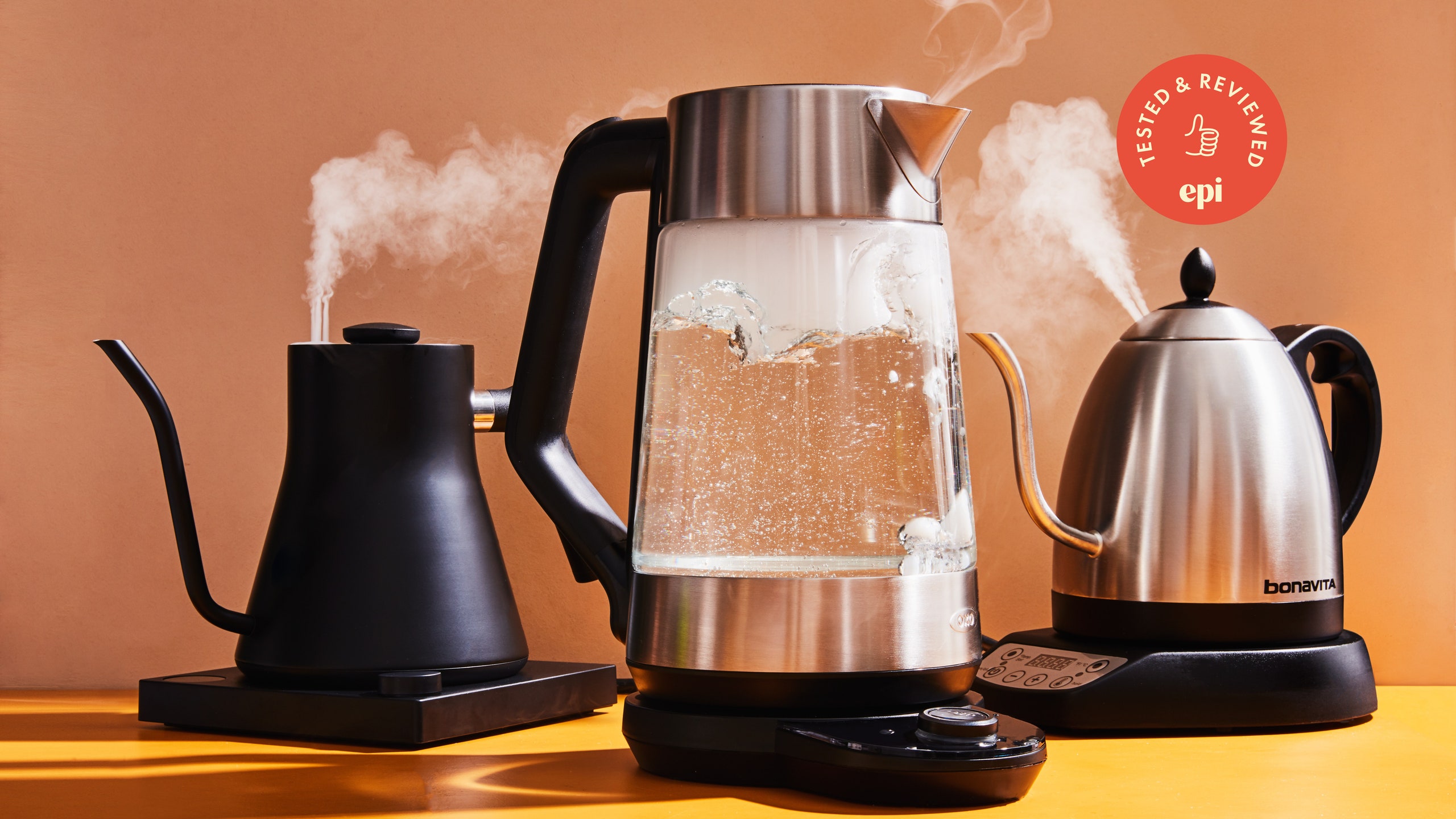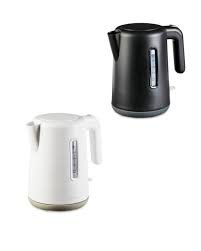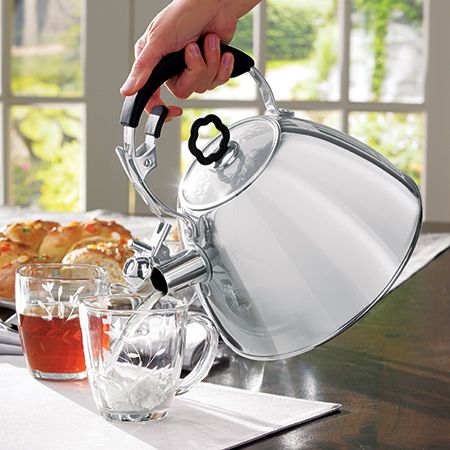When comparing an electric kettle to a stovetop kettle, consider convenience, speed, and energy efficiency. Electric kettles are a faster, more convenient option for boiling water, offering precise temperature control and automatic shutoff features.
Stovetop kettles require a heating source, taking longer to heat water and requiring more manual monitoring. Both types have their merits, but the choice ultimately depends on personal preference and specific needs. Whether you prioritize speed and ease of use or prefer traditional stovetop methods, understanding the differences can help you make an informed decision for your kitchen.
When considering an electric or stovetop kettle, it’s important to weigh the pros and cons to find the best fit for your lifestyle.
Functionality Of Electric Kettles
When it comes to the functionality of electric kettles, there are several key aspects that set them apart from stovetop kettles. Understanding the distinct features of electric kettles can help users make informed decisions based on their specific needs and preferences.
Heat Source And Mechanism
Electric kettles, as the name suggests, rely on electricity as their primary heat source. They are equipped with a heating element, typically made of metal, which rapidly generates heat when powered on. This mechanism allows for efficient and consistent heating of the water within the kettle.
Speed Of Boiling
One of the standout advantages of electric kettles is their remarkable speed in boiling water. Thanks to their powerful heating elements and enclosed design, electric kettles can bring water to a boil significantly faster than stovetop kettles. The rapid boiling time is especially beneficial for those who value time and convenience in their daily routines.
Functionality Of Stovetop Kettles
Stovetop kettles have been a staple in kitchens for generations, offering a traditional and reliable method for boiling water. Their functionality is defined by their heat source, mechanism, and speed of boiling, which sets them apart from electric kettles.
Heat Source And Mechanism
Stovetop kettles, also known as traditional whistling kettles, primarily rely on direct heat from a stove burner or open flame to boil water. The traditional design consists of a metal kettle, often made of stainless steel or copper, with a conical spout and a handle for easy pouring. The heat is transferred from the cooking surface to the base of the kettle, heating the water to its boiling point.
Speed Of Boiling
While stovetop kettles may take slightly longer to boil water compared to electric kettles, many individuals appreciate the process as a meditative and calming ritual. Depending on the heat source and the amount of water, stovetop kettles can generally boil water in 4 to 8 minutes, making them a practical and efficient choice for daily tea or coffee preparation.
Factors Affecting Boiling Time
Factors affecting boiling time play a significant role in determining the efficiency and performance of electric and stovetop kettles. Understanding these factors helps users make informed decisions based on their specific needs and preferences. Here’s a closer look at the key factors influencing boiling time when comparing electric and stovetop kettles.
Power Source Impact
The power source of a kettle greatly influences its boiling time. Electric kettles, powered by electricity, often boil water faster than stovetop kettles. This is due to the consistent and direct application of heat from the electric element, resulting in quicker heating and boiling. Stovetop kettles, on the other hand, rely on the heat from a burner or stove, which may lead to variations in boiling time based on the heat source and intensity.
Material Composition
The material composition of both electric and stovetop kettles can impact boiling time. Electric kettles often feature a stainless steel or heat-conductive material that facilitates efficient heat transfer, resulting in faster boiling. Stovetop kettles, commonly made from materials like stainless steel, copper, or aluminum, may vary in their heat conductivity, affecting boiling time. The thickness and quality of the material can also play a role in heat retention and distribution.
Water Quantity
The quantity of water being heated is a crucial factor in boiling time. Both electric and stovetop kettles can accommodate varying water quantities, with some models designed to boil larger volumes faster. Electric kettles typically have clear water level indicators and are designed to heat water efficiently regardless of the quantity, resulting in consistent boiling times. Stovetop kettles may experience variations in boiling time based on the amount of water being heated due to heat distribution and thermal mass.
Impact Of Power Source
Electric Power Efficiency
Electric kettles are lauded for their efficient use of power. They have the advantage of heating the water directly, making them quicker and more energy-efficient than stovetop kettles. With a capacity to deliver boiling water in a matter of minutes, electric kettles utilize power more effectively, resulting in reduced energy consumption over time.
Stovetop Heat Distribution
Unlike electric kettles, stovetop kettles rely on the heat source from the stove or open flame. The heat distribution in stovetop kettles may not be as uniform when compared to electric kettles. This can lead to potentially uneven heating and prolonged boiling times, especially on certain types of stoves. However, some stovetop kettles are designed with advanced heat-conducting materials to enhance heat distribution and improve efficiency.
Influence Of Material Composition
When choosing between an electric kettle and a stovetop kettle, the material composition plays a crucial role in determining performance and durability. The type of material used impacts conductivity, heat retention, and overall functionality, making it an important factor to consider.
Conductivity Of Electric Kettles
Conductivity is a significant factor in determining the efficiency of electric kettles. Materials such as stainless steel, copper, and aluminum are commonly used in the construction of electric kettles. Stainless steel provides excellent heat conductivity, allowing for quick and efficient boiling of water. Copper is another material known for its high thermal conductivity, ensuring rapid heating. Aluminum is lightweight and also offers good thermal conductivity, making it a popular choice for electric kettle construction.
Heat Retention Of Stovetop Kettles
When it comes to stovetop kettles, the material composition affects heat retention. Materials like cast iron, stainless steel, and ceramic are frequently used in the construction of stovetop kettles. Cast iron is known for its exceptional heat retention, keeping water hot for an extended period. Stainless steel is durable and provides moderate heat retention, making it a practical choice for stovetop kettles. Ceramic, while delicate, offers decent heat retention, making it suitable for those who prefer a slower, more consistent heating process.
Role Of Water Quantity
One of the key factors to consider when choosing between an electric and stovetop kettle is the role of water quantity. The amount of water used in the kettle can affect the boiling time, energy efficiency, and convenience. Let’s explore the strategic fill levels and boiling time correlation for both types of kettles.
Strategic Fill Levels
When it comes to water quantity, both electric and stovetop kettles have their own strategic fill levels. For electric kettles, there is typically a maximum fill line indicated for safety and performance. Avoid overfilling the electric kettle to prevent spillage and ensure efficient boiling. On the other hand, stovetop kettles may require more careful observation as they often do not have prominent fill lines. It’s essential to measure the water accurately for optimal performance and safety when using a stovetop kettle.
Boiling Time Correlation
The amount of water in the kettle directly correlates with the boiling time for both electric and stovetop kettles. Higher water levels generally result in longer boiling times, especially for electric kettles. This factor should be considered when time is limited, such as in the morning rush or when preparing multiple servings. Lower fill levels can expedite the boiling process and conserve energy, making the kettle more efficient for smaller quantities of water.
Environmental And Energy Efficiency
When comparing electric and stovetop kettles, it’s important to consider their environmental impact and energy efficiency. Both options have their pros and cons in terms of environmental footprint and energy consumption. Let’s delve into the details, so you can make an informed decision based on environmental and energy considerations.
Electricity Vs Gas Comparison
One of the key factors to consider when evaluating the environmental impact of electric and stovetop kettles is the source of energy they utilize. Electric kettles rely on electricity, while stovetop kettles typically use natural gas as a fuel source. When comparing the two, it’s essential to assess the environmental implications of electricity generation versus gas consumption.
Environmental Footprint Assessment
Before deciding between an electric or stovetop kettle, it’s crucial to consider their environmental footprints. An environmental footprint assessment encompasses various factors, including greenhouse gas emissions, resource depletion, and overall ecological impact. By analyzing the life cycle of both types of kettles, you can gain insight into their environmental implications.

Credit: www.amazon.com
Electricity Vs Gas
When it comes to choosing between an electric and gas stove kettle, the energy source becomes a crucial aspect to consider. Understanding the implications of electricity versus gas can help you make an informed decision based on your preference and environmental consciousness. Let’s delve deeper into the energy source implications.
Energy Source Implications
Electric kettles are powered by electricity, requiring a direct connection to a power source. They are designed to quickly heat water through the conversion of electrical energy. On the other hand, stovetop kettles function using gas as the energy source, utilizing the flame to heat the water.
With electric kettles, the energy source is primarily derived from electricity, which might be sourced from renewable or non-renewable sources depending on your local grid. However, gas stovetop kettles directly rely on non-renewable natural gas for heating purposes.
Environmental Impact Analysis
When evaluating the environmental impact, the electricity vs gas debate plays a significant role. Electric kettles, particularly those powered by renewable energy sources, tend to have a lower environmental impact compared to their gas counterparts. The energy efficiency of electric kettles also contributes to a reduced carbon footprint.
Gas stovetop kettles, while providing a traditional and hands-on way of boiling water, are associated with greenhouse gas emissions and contribute to environmental pollutants. When it comes to making an eco-friendly choice, the energy source has a tangible impact on environmental sustainability.
Frequently Asked Questions On Electric Vs Stovetop Kettle
What Are The Benefits Of Using An Electric Kettle Over A Stovetop Kettle?
An electric kettle boils water quicker due to its higher power rating, is more energy-efficient, and comes with added features like automatic shut-off and temperature control, offering convenience and precision in brewing beverages.
Are Stovetop Kettles More Durable Compared To Electric Kettles?
Stovetop kettles are generally more durable as they are made of materials like stainless steel or cast iron, while electric kettles often contain electronic components that may wear out over time. However, with proper care, both types can last for years.
Is There A Difference In Taste When Using An Electric Or Stovetop Kettle?
Both electric and stovetop kettles can produce excellent-tasting hot water for beverages. The method of heating water does not significantly affect the taste. However, some enthusiasts believe that certain materials used in stovetop kettles can enhance the flavor, such as cast iron.
Conclusion
To sum up, both electric and stovetop kettles have their own advantages and drawbacks. Consider your lifestyle and preferences when choosing between them. Electric kettles offer convenience, while stovetop kettles provide a traditional experience. Ultimately, the best choice depends on your specific needs and how you prefer to make your tea or coffee.




